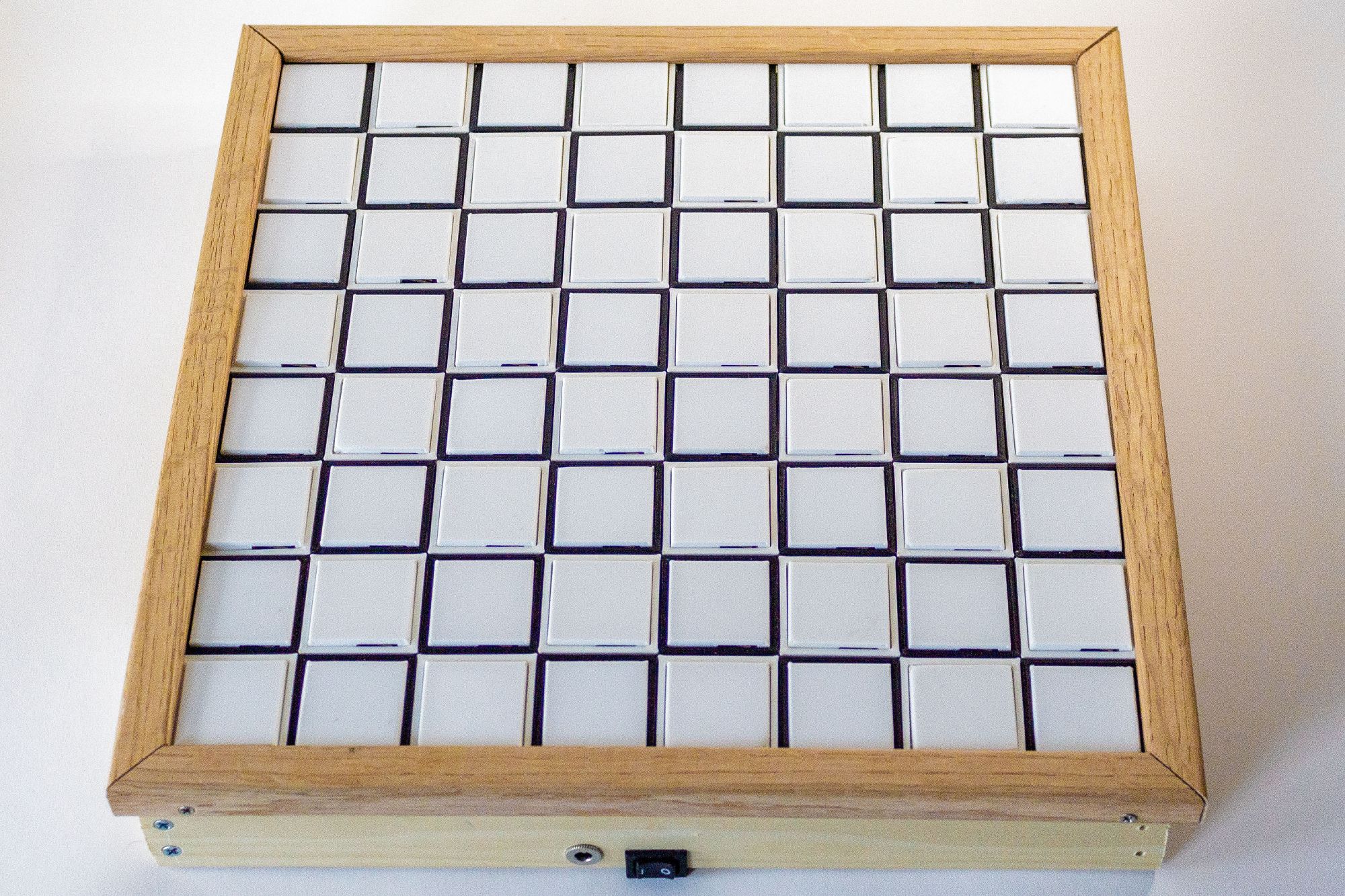Design Project: Gameboard
University of Pittsburgh; Department of Electrical and Computer Engineering
ECE 1896: Senior Design
Team: Thomas Driscoll, Dalton Hill, Demetrius Pyo, Nicho Carnevali-Doan

(Page to be updated soon!)
Design Overview
From the design report:
"We aimed to build an accessible gameboard with a preprogrammed rule set of the game of checkers built in. Players with limited dexterity may have trouble moving pieces around on the board and are not easily mobile, needing to carry the individual pieces. A ready-to-go electronic checkers game would allow for immediate setup, support following game rules, and multiple inputs from buttons, phone, or voice.
Players will have the option of either pressing physical buttons on the checkerboard to move pieces around, or they may speak into a built-in microphone. Saying a command will move a piece from one coordinate to another. For example, "A1 B2" will move a checker piece from column A and row 1 to column B and row 2. The prototype is an 8-piece by 8-piece RGB LED array with LEDs indicating where pieces are on the board. The color of the LEDs denote which player’s piece it is, but the shade of the piece differentiates a piece from a king. The LED array is controlled by a microcontroller and utilizes a wireless bluetooth module to communicate with a phone. The entire device is powered from a portable battery bank and allows for up to 30 hours of gameplay time. We designed a PCB to interface 64 buttons and 64 LEDs with an ATmega328p as well as allow two ATmega328p's to communicate with each other in a master-slave configuration. The master ATmega328p controls the LEDs and runs the gameplay code as well as reads inputs from the buttons, bluetooth, and receives moves from the slave ATmega328p. The slave ATmega328p is used for speech recognition, it uses the game state as a dictionary for move guessing. A microphone connected to the slave listens for voice input and a speech recognition algorithm converts the voice signal to a move guess to provide the game with another form of input."